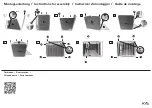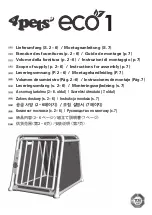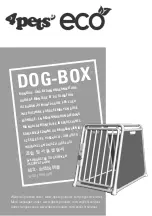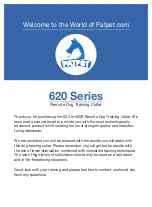
OPERATION AND MAINTENANCE MANUAL
12-2015
3
1 TECHNICAL DESCRIPTION
1.1 PRODUCT NAME AND FEATURES
The subject of this O&MM is:
Cast-iron standpost hydrant TYPES 8001 and 8010 with automatic water drainage activated by flow
stoppage.
1.2 PURPOSE
The cast-iron standpost hydrants TYPES 8001 and 8010 with automatic drainage are designed for
installation on underground pipelines laid horizontally below the freezing zone, and are intended for
drawing water.
1.3 TECHNICAL SPECIFICATION
Cast-iron standpost hydrant TYPES 8001 and 8010 with automatic water drainage is designed for
drawing water at temperatures from +1
°
C to +50
°
C.
- Available diameters (dimensions)
¾”
- Maximum medium flow rate:
- Liquid up to 4 [m/s]
- Equipment control: by pressing a lever.
2 STRUCTURE
2.1 FITTING DESIGN DESCRIPTION
A cast-iron standpost hydrant TYPES 8001 and 8010 with automatic water drainage includes a cast-iron
body and head placed above ground and an underground valve chamber with connection, attached to the body
with a column with flange located on the hydrant's foot. The hydrant's foot is placed on the ground above water
supply network's pipe. The valve chamber contains a closing component (a poppet valve) connected to the outlet
in the upper part of the hydrant using a suction pipe also used for drawing water. The movable suction pipe inside
the hydrant's top part is coupled with control lever via stopped used for closing the vertical section of the suction
pipe supported with a spring. The spring presses the suction pipe to the valve chamber seat. Pressing the lever
attached axially inside the hydrant's top part lifts the complete suction pipe and opens water flow. After releasing
the lever, the spring pushes the suction pipe downwards and closes water flow. The valve chamber has a seal for
the closing component which cuts off the coupling with the column when the suction pipe is raised (open flow)
and opens the connection of the suction pipe with the column with suction pipe lowered (closed flow), thus
enabling the remaining water from the suction pipe flow to the column. That way, fresh water does not enter the
column and after every draw the remaining water flows to the space located between the column and the suction
pipe and it may escape to the ground through the water drainage outlet connection.






























